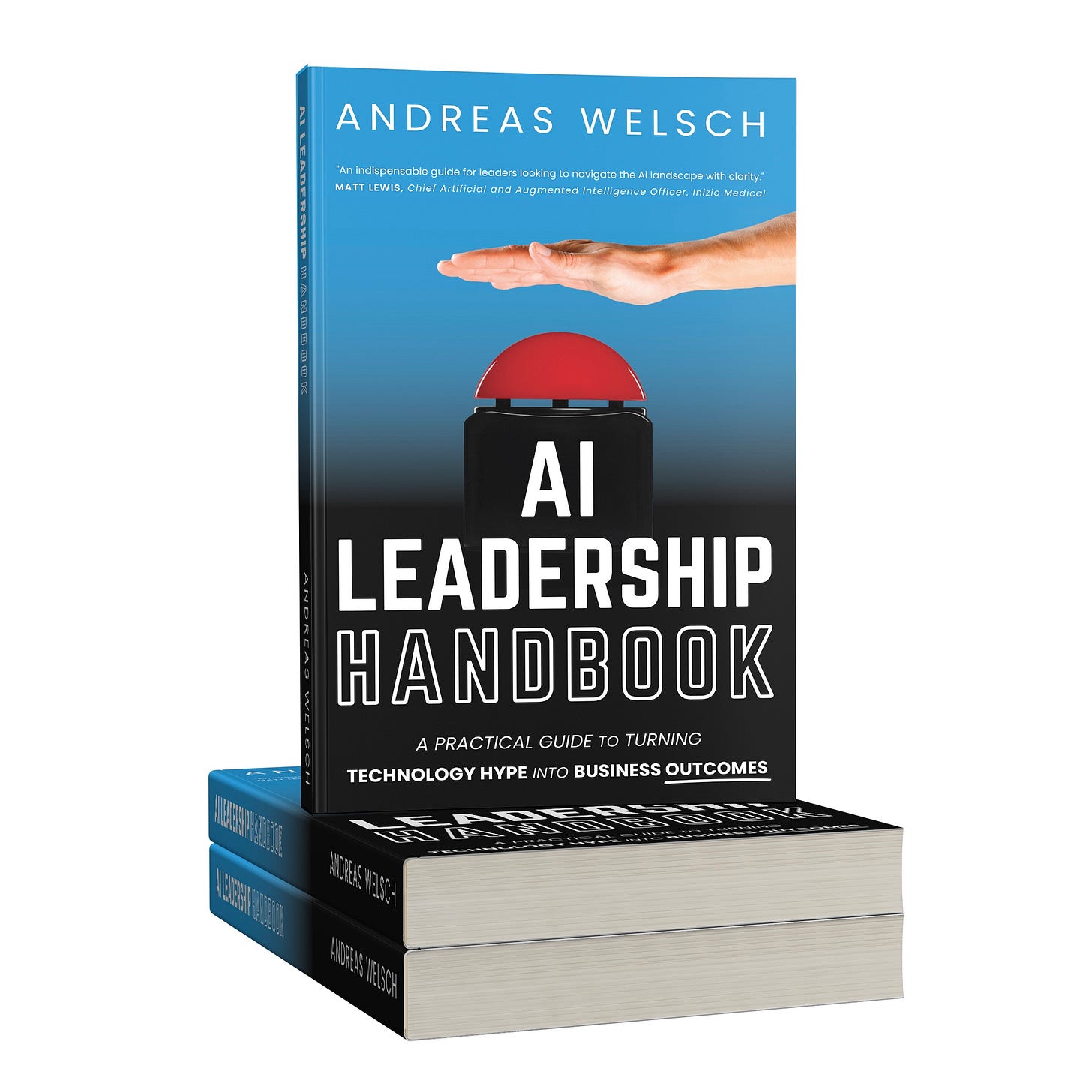AI Hype: Addressing The Elephant In The Room (And Calling It Out)
How The Hype And Disillusionment Are Contributing To The Market Sell-Off
»Ladies and Gentlemen. We interrupt our regular program for a special edition to address the elephant in the room: AI hype and tech sell-off.« — But to understand the recent events, you need to look at the forces that fueled the hype—and how they fuel each other. So, let’s go back to 2023 for a second:
McKinsey & Company estimated that Generative AI would add up to $4.4T to the global GDP. Goldman Sachs predicted that 300 million jobs will be affected by increased levels of AI-driven automation and that the global GDP will increase by 7%. Lastly, OpenAI founder Sam Altman has been talking about Artificial General Intelligence (AGI) being near. All of that together gets investors excited…
The “Flywheel Effect” That Dominates the AI Hype
From what I have observed in the tech and software industry, four forces are at play. They are closely intertwined, creating a flywheel effect:
Making money (venture capitalists + incumbents): New technologies like AI create a "winner-takes-it-all" market in tech. As demonstrated by OpenAI, whoever is first to market will dominate the conversation and is best positioned to become the de facto standard. ChatGPT has become a household name. Naturally, vendors need to stake their claim early and deliver against that promise or roadmap. Likewise, venture capitalists are looking for high returns on their investments.
Future-proofing investment (customers): In B2B software, customers making multi-million-dollar investments are looking for reassurance that their investments in software are future-proof and that vendors invest these dollars into R&D, which, in turn, will benefit the customers using these systems.
Attracting investment (startups): Founding your company on an AI idea helps attract new funding when interest rates have increased and access to capital has become harder. Working on or incorporating the latest technology is a sign of future-proofing the product and catching on to new trends.
Attracting investment (incumbents): With share prices of NVIDIA, Microsoft, and others skyrocketing this year based on their investment in AI, investors are looking for promising, more affordable alternatives to get in. Investors often choose industry titans who have been in business for decades and are adding AI capabilities to their existing product portfolio, hence being able to scale these new capabilities (and markups) to an existing customer base.
These forces create the rosy-red statements about economic impact, labor market shifts, singularity, etc. But when realization sets in that it will take longer than 2-3 quarters for all of that materialize, it’s time to cash in your chips. While “faster and farther” is true on the way up, it’s also true when the market takes a breath—and the forces that fuel the hype also fuel the doubt.
Level up your AI leadership game during hype and disillusionment
Andreas Welsch uses real-world knowledge and examples from interviews with over 60 leaders and experts in AI to help you both introduce and incorporate AI into your organization, from aligning it with your business strategy to turning new-to-AI employees into passionate multipliers to making sure humans stay at the center of your AI use. After reading this book, you will be able to confidently implement AI in your business, no matter your industry. Available Sep 10, 2024.
When AI Hype Turns Into Doubt
Within a year of sky-high predictions and expectations, capital expenditure investments in hardware, data centers, and infrastructure at major tech players have reached billions. But is this a classic case of “Build it, and they will come?”
Investors are second-guessing whether all these investments are justified and whether they will ever see the return and revenue growth that tech players have been promising for over a year. (If you work in tech, you know that adopting new technologies does not happen overnight—at least not on a broad or global scale.)
Add to that increased interest rates (higher cost of borrowing for startups), concerns about the U.S. economy heading toward a recession (reduced spending), and earning reports that don’t exceed the already financial analysts’ sky-high expectations (adoption lag), and you have a real problem in the market. And, oversimplified, these concerns fuel the doubt, leading to the recent sell-offs.
In addition, analysts such as Gartner have updated their predictions, estimating that 30% of Generative AI projects will fail in the proof-of-concept phase. While that number might sound alarming at first, it is actually a good sign compared to the estimates during the Machine Learning hype in 2020. (Back then, 53% of projects were expected to fail. That’s marginally better than a coin toss!)
The reasons for project failures are quite similar this time around:
Unclear business value & impact:
What business problem are you solving?
Can you quantify your impact?
Do your stakeholders care?
Unclear technology capabilities:
Is Generative AI the right technology for the task?
Can Generative AI do what you envision?
So, how can you turn it around in your business?
How AI Leaders Weather the AI Storm
Sell-off or not, AI is not going anywhere—neither did the Internet. It’s quite the opposite, and AI adoption will happen with more realism but over a longer period of time than initially promised last year.
That’s the time for AI leaders and experts to shine. That’s where the rubber meets the road and where you can make business value the ultimate measure of success for your AI projects.
I am convinced that if the U.S. economy enters a recession this year and IT budgets are cut, AI will prevail. In fact, Forrester has recently reported that 92% of surveyed IT leaders plan on increasing their 2025 spending on AI and related capabilities.
As an AI leader, it comes down to this: (1) understanding where you can leverage AI in your business with minimal to reasonable additional investment (e.g. embedded in your business applications), and (2) helping your teams understand what AI is and how it can help them in their role (e.g. upskilling on AI literacy).
And maybe…maybe, as the AI hype turns into realism, you can pursue initiatives that deliver business value—beyond the shiny object status of Generative AI.
Summary
Lofty goals and predictions have fueled the latest AI hype in the market. When these goals require more time to materialize, confidence in even the largest tech players’ abilities starts waning. Combined with additional market forces and factors, this contributes to the recent tech sell-off on the financial markets. But AI leaders have a real opportunity to make AI tangible in their business by leveraging capabilities built into the applications their users use daily, and helping their organization become AI literate.
What has gotten you more concerned—the hype or the disillusionment?
Explore related articles
Become an AI Leader
Join my bi-weekly live stream and podcast for leaders and hands-on practitioners. Each episode features a different guest who shares their AI journey and actionable insights. Learn from your peers how you can lead artificial intelligence, generative AI & automation in business with confidence.
Join us live
August 12 - Lasse Rindom, AI Lead at BASICO, will share how you can leverage the AI hype and disillusionment to drive business impact.
August 20 - Quentin Reul, Chief AI Officer, will talk about the 4 Generative AI challenges you can’t ignore.
Watch the latest episodes or listen to the podcast
Follow me on LinkedIn for daily posts about how you can lead AI in business with confidence. Activate notifications (🔔) and never miss an update.
Together, let’s turn hype into outcome. 👍🏻
—Andreas
















Really helpful Andreas and looking forward to the book!